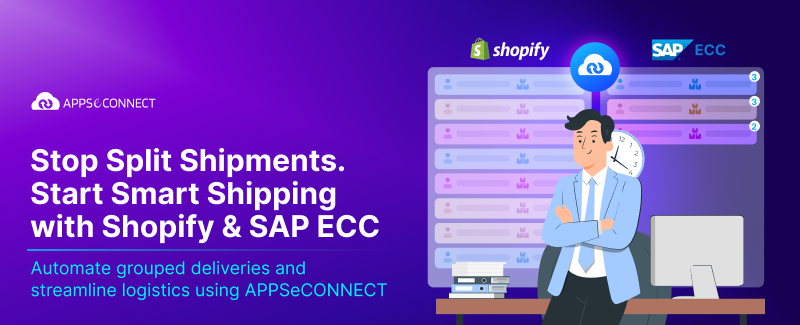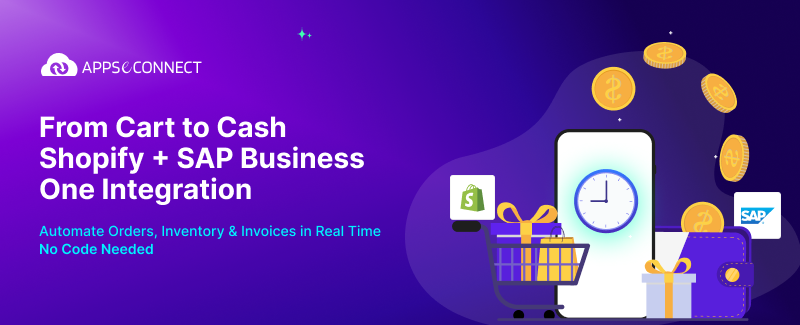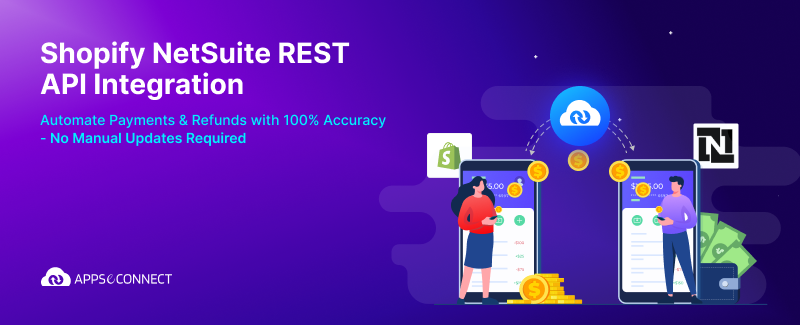Even before the COVID-19 pandemic disrupted the global industry structure, organizations were implementing technologies to innovate and thrive in an ever-growing digital market. But with the pandemic kicking off the new decade, industries that were making a slow transition to a digital infrastructure had to do it almost overnight to manage this global crisis. While the pandemic has made the digital transformation a necessity for organizations to survive, companies still lack behind in many avenues for a complete transition. Complete end-to-end integration of all systems within the organization through a robust BPA and integration platform is necessary to achieve true digital transformation.
What is Digital Transformation?
Enterprise digital transformation is the implementation of digital solutions to manage every aspect of an organization’s workflow. The transformation optimizes how the organization operates at a fundamental level and helps provide a better experience and value to the customer.
Digital transformation, however, is not just the implementation of a suite of software solutions to manage business processes. It is a complete shift in a company’s approach towards engaging and adding more value to the customer experience. Digitalization is not just implementing technology to make a workflow faster but to conform business processes to make the most of the technology investment by integrating it under a single network.
If you have multiple systems running in your business, connect all of them under one single platform to automate the business process and improve your productivity and efficiency!
What advantages does Digital Transformation provide to businesses?
Digital transformation with an iPaaS fundamentally alters how a business approaches every aspect of its operation, which includes systems, processes, workflow, and culture. By introducing new bleeding-edge technologies such as machine learning and artificial intelligence (AI) into a workflow, businesses can open themselves to new heights of growth and success. Let us take a look into the advantages digital transformation provides for a business.
Data-driven decision making
Every digital tool introduced into the workflow of the business acts as a touchpoint for collecting data. Digitalization then allows for converting this raw data into actionable information. The trends forecasted by the data then can be used as a guide for the business to align its goals, objectives, and initiatives. The collected data can provide critical insight to the company such as, identifying products, services, and features that have high customer demand, observing how customers use a product or services, and recognizing potential issues so that they can be resolved before release. The complete overview of the functioning of an organization provided by digitalization allows for effective long-term strategic planning for the business.
Enables flexible operations through remote communication
When the pandemic prompted lockdowns across the globe, digital communication and coordination platforms came to the forefront to keep organizations running. With the inability to have the entire workforce available on-premises during regular work hours, digitalization empowered businesses to operate efficiently through remote communication channels. The digital communication platforms also provided employees the flexibility to work from anywhere on the globe. The flexibility of the workplace was exceptionally beneficial for companies that have a global reach with employees residing in various parts of the world.
Allows for optimized allocation of human resources
The biggest fear associated with digitalization is that it would replace the human workforce. The idea that machines can make humans obsolete is untrue. No number of digital tools can replace the creative and complex problem-solving capabilities of a human. Digitalization aims to free up human resources for more complex operations and offloads the burden of low-skill repetitive tasks to a bot. The human resources can now be allocated to higher functions within the organization to carry out more complex tasks that are critical to the success of a business.
Improved customer experience through data-driven customer insight
Digitalization allows companies to collect a vast amount of data throughout the entire customer journey. With a deeper understanding of the customer and their needs, organizations can develop a customer-centric business strategy. With both structured data collected from customer interactions with the product and service and unstructured data from social media metrics, organizations can create a business model to attain sustainable long-term customer-driven growth. The data-driven approach can provide seamless, intuitive experiences to the customers. With the abundance of choices customers have today, businesses need to provide the best-in-class customer experience to stay competitive. Customer experience has emerged as the key driver for sustainable business growth and can be achieved only through a robust digital infrastructure.
Increases operational agility
By implementing tools that work together seamlessly and streamline workflows, an organization can become more agile. Once a workflow gets established within an organization, the time and resources required to undergo an operational shift can prevent decision-makers from making the change. The lack of flexibility to make the necessary workflow changes can slow down innovations and prevent companies from capitalizing on emerging latest trends. However, the organization can make quick daily micro-adjustments and major workflow shifts to align the business rapidly to new industry demands and improve speed-to-market effectively and increase business productivity effortlessly with a robust iPaaS platform.
How integration is the Secret Ingredient for Digital Transformation
While digitalization has become the main goal for organizations in the post-COVID industry, hastily adopting software solutions into the business workflow will not lead to a digital transformation. Software tools without end-to-end integration operate in isolation, preventing workflow automation and the creation of a work environment where humans and technology freely interact to support the business.
One of the most significant difficulties organizations are now facing is siloed priorities across different departments of an organization, leading to out-of-focus initiatives, overstretched resources, and subpar results. Another glaring issue of such an infrastructure is that data generated by each department remains compartmentalized and isolated from the rest of the organization resulting in a lack of intra-organizational communication.
Data integration thus plays a crucial role in the digital transformation journey of an organization by removing data silos and providing a singular platform for the exchange of data through the entire organization. Without this, a company cannot achieve the goal of creating a modernized and automated technology-embedded workflow. Data integration forms a connected organization-wide environment where new systems can be added, and obsolete systems get removed without compromising the enterprise’s data stability and security.
With the complexity of nonintegrated software infrastructures, companies lose millions of dollars due to data duplication caused by manual data entry. The need to manually transfer, edit and rectify data entries leads to significantly decreased business productivity. Through data integration, any updates made to a dataset get synchronized in real-time across the entire system, thus removing the need for manual data entry and cases of data redundancy. Moreover, with the most updated data made readily accessible to all departments in the organization, every user can be on the same page when working together, leading to improved team coordination. With data made available to the entire enterprise, every team will always be aware of recent developments and take future actions accordingly.
The integration of the entire digital infrastructure of a business also provides a centralized dashboard for decision-makers to leverage data generated by every touchpoint of the workflow. Without an integrated infrastructure, a lot of data generated by the system gets overlooked and unused for business analytics. The dashboard makes every piece of data sent between systems readily visible to the entire enterprise. The prompt availability of data allows an enterprise to engage in proper digital analytics and faster decision-making across all departments, improving the overall business process. By making decisions with context and insight from all sectors of the business, decision-makers can create long-term business strategies for sustainable revenue and reduced operational costs.
Another way integration assists in the digital transformation of an organization are during upgrading from a legacy system. Upgrading existing technology is often necessary as outdated software cannot support new functionalities that an organization may need. However, implementing a new system is a costly and time-consuming process. Often there is downtime and a re-training period involved in case of a system replacement. By integrating systems and creating a centralized platform through which old and new systems can exchange data, organizations can reduce costs and keep using their legacy software infrastructure while adding new functionalities using separate applications and services. Implementing cloud solutions also gets streamlined through integration, enabling the organization to operate in a hybrid model that utilizes both cloud and on-premises solutions.
Thus, we can see how integration acts as the secret ingredient in the digital transformation of a business by not only assisting during the beginning stages of the transition but also throughout its entire life cycle. Integration helps during the transition to newer platforms, enables the real-time communication of the created digital environment, and provides data and analytics of the workflow for better team communication and business strategy planning.
So. if you are an organization planning to start its digital transformation journey, a robust integration tool is a must-have.
Streamline your Digital Transformation through APPSeCONNECT
APPSeCONNECT is the tool your business needs to start its journey towards true digital transformation. APPSeCONNECT is a robust Integration Platform as a Service (IPaaS) that provides both hybrid and cloud integration capabilities to the user. The hybrid solution allows the users to configure the integration settings inside the cloud portal and download and install the APPSeCONNECT on-premise agent in their physical infrastructure, making the data transfer between applications take place entirely within the company’s network. The cloud integration capabilities of APPSeCONNECT, on the other hand, allow users to integrate cloud applications via the web as a service without the need for downloading and installing any software in the organization’s on-premises systems. The real-time business process automation capabilities, service-oriented infrastructure, and micro-services of the platform also help in streamlining business processes with agility, security, and reliability.
Begin your digital transformation with the robust integration capabilities of APPSeCONNECT to ensure your business’s long-term growth and success.
To learn more in detail about what advantages APPSeCONNECT can provide for you, head on here.
If you have multiple systems running in your business, connect all of them under one single platform to automate the business process and improve your productivity and efficiency!























